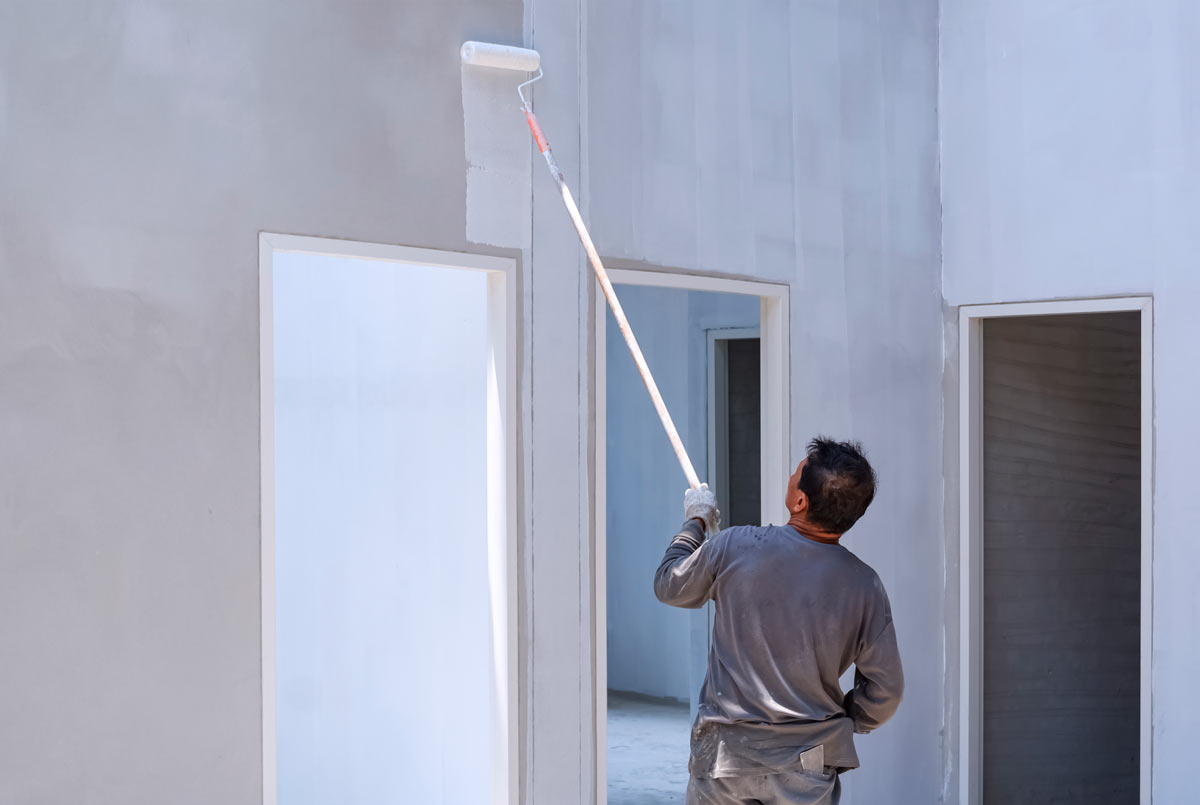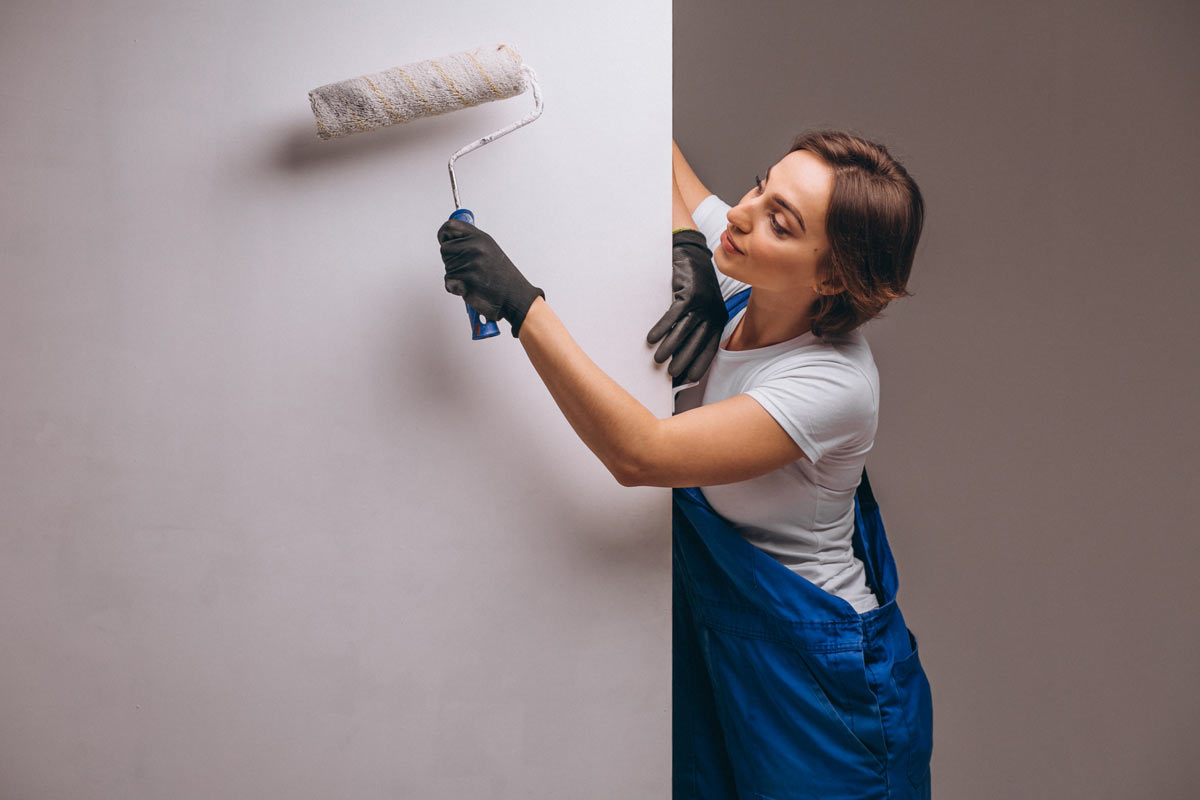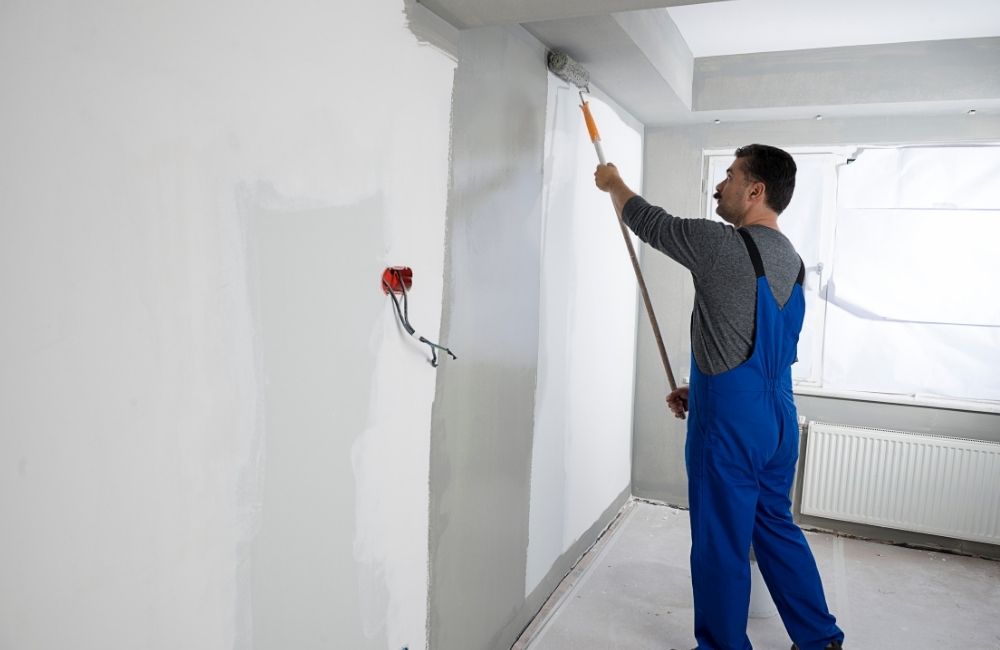
How to Clean Walls Without Removing Paint?
Painted walls collect fingerprints, dust, scuffs, and smudges over time, but cleaning them can feel risky—especially with delicate finishes like matte or flat paint. Many homeowners hesitate to scrub away grime for fear of peeling or fading the paint. The good news is, with the right technique and tools, walls can be safely cleaned without causing damage.
Here are five smart, simple ways to wash walls without stripping paint.
Table of Contents
Key Takeaways
✔ Always identify the wall’s paint type before choosing a cleaning method.
✔ Use mild cleaners like diluted dish soap to avoid damaging paint.
✔ Dust and prep walls before applying any moisture to prevent streaks.
✔ Spot clean stains early to ensure wall stain removal without paint damage.
✔ Clean in small sections and dry each area immediately for best results.
✔ Avoid abrasive tools to safely clean matte, satin, or gloss walls.
✔ Hire professionals for deep stains, mold, or annual touch-ups to protect paint integrity.
How to Clean Walls Without Removing Paint
1. Dust and Prep the Walls First
Before using any cleaning solution, start with dry cleaning methods. Dust and prep work help avoid pushing dirt deeper into the paint, especially on sensitive surfaces. This step matters most when learning how to clean walls without removing paint.
How to Properly Dust Walls Before Washing
- Remove Surface Dust with a Dry Microfiber Cloth: Use a dry microfiber cloth or electrostatic duster to gently wipe the entire wall in vertical strokes, starting from the ceiling and working downward. For example, in living rooms with ceiling fans or vents, this catches dust particles that settle on the upper wall, preventing streaks when wet cleaning begins.
- Vacuum Around Corners and Baseboards: Fit a vacuum cleaner with a soft brush or upholstery attachment to clean along trim, light switches, and outlet covers. In areas like kitchens, where grease particles settle near the stove, vacuuming beforehand keeps grime from smearing into the wall when washing flat paint walls.
- Check for Spiderwebs and Loose Debris: Use a long-handled duster or a clean broom to sweep away cobwebs often found in corners, especially near windows and behind furniture. This prevents webbing and dust balls from turning into muddy smudges during wet cleaning, helping with wall stain removal without paint damage.
2. Use a Mild Cleaning Solution
Once walls are dust-free, the next step is choosing a gentle cleaner that won’t strip the paint. Harsh chemicals or strong degreasers can cause dull spots, peeling, or faded patches—especially on flat or matte finishes. A homemade, mild solution works best for those who want to wash walls without damaging paint.
How to Make and Apply a Safe Cleaning Solution
- Mix Warm Water with Dish Soap: Combine a few drops of clear dish soap with a bucket of warm water to create a gentle cleanser. This solution works well for most finishes and is especially effective when figuring out how to clean walls without ruining paint in high-touch areas like entryways or stairwells.
- Apply with a Damp Sponge, Not a Wet One: Dip a soft sponge into the solution, wring it out until it’s just damp, and wipe the wall using light pressure. Over-wetting the sponge can leave behind water stains or soften the paint—especially on matte or chalky finishes.
- Follow with a Dry Cloth Immediately: After wiping a section, go over it with a clean, dry microfiber cloth to prevent moisture from soaking in. This extra step is key when trying to clean matte, satin, or gloss walls without leaving behind streaks or softening the paint layer.
3. Spot Treat Stains Gently
Walls often collect marks—crayon art in a playroom, grease near the stove, or shoe scuffs in a hallway. Spot treating specific problem areas helps with wall stain removal without paint damage. The goal is to lift stains without disturbing the surrounding finish.
How to Spot Clean Without Removing Paint
- Use Baking Soda Paste for Scuffs and Crayon: Mix a small amount of baking soda with water to make a paste, then apply it with a soft cloth in a circular motion. This method lifts dirt without scratching the surface, which is especially helpful when washing flat paint walls in kids’ bedrooms or hallways.
- Dab Greasy Spots with Vinegar Solution: Mix equal parts white vinegar and water in a spray bottle, spritz lightly on greasy spots, and dab gently with a microfiber cloth. This works well for satin or semi-gloss finishes commonly used in kitchens, providing a safe way to clean walls without ruining paint.
- Avoid Magic Erasers on Matte Paint: Magic erasers can lift stains, but they also act like very fine sandpaper. On matte finishes, they may lighten the paint or leave behind dull patches, so they should only be used on tougher gloss or semi-gloss areas when trying to wash walls without damaging paint.
4. Work in Small, Manageable Sections
Trying to clean an entire wall at once can lead to uneven results, water spots, or streaking. Breaking the job into sections allows for better control and more consistent cleaning. This ensures a safe and smooth process when learning how to clean walls without removing paint.
Why Small Sections Make a Big Difference
- Prevents Drips and Watermarks: Cleaning one area at a time and drying it right after prevents water from running down the wall and causing streaks. This is especially important for gloss finishes, where drips can leave noticeable dull trails.
- Ensures Even Pressure and Coverage: When focused on a small section—say, 2 feet by 2 feet—it’s easier to apply consistent pressure with the sponge or cloth. Uneven scrubbing over large areas can create blotchy spots, particularly on delicate surfaces like matte paint.
- Easier to Catch Missed Spots or Residue: Smaller areas are easier to inspect as you go, making it more likely to spot leftover grime or sticky residue before it dries. This method also supports safe wall stain removal without paint damage in more detailed areas like around door frames or light switches.
5. Rinse and Dry for a Clean, Even Finish
Even mild cleaning solutions can leave a slight film on walls if not rinsed properly. Rinsing and drying is often overlooked but makes a big difference in how walls look once clean. For anyone learning how to clean walls without ruining paint, this final step ensures no residue remains.
How to Rinse and Dry Walls the Right Way
- Use a Clean Damp Cloth for Rinsing: After cleaning each section, wipe it down with a new cloth dampened with clean water. This removes any leftover soap, vinegar, or baking soda that could cause fading over time—especially when washing flat paint walls.
- Dry with a Fresh Towel or Microfiber Cloth: Gently pat the wall dry to avoid streaks or water spots, particularly on gloss or satin finishes. Leaving walls to air dry may lead to uneven patches or minor bubbling, depending on humidity levels and paint type.
Inspect Under Different Lighting: Once the wall is dry, check it under natural light and artificial light from multiple angles. This catches any missed streaks, especially when trying to clean matte, satin, or gloss walls without creating uneven shine or residue.
How to Identify Paint Types Before Cleaning
Before starting any wall-washing project, it’s important to know what kind of paint is on the surface. Paint finishes react differently to moisture and friction—what works for one may ruin another. Learning how to clean walls without removing paint starts with correctly identifying whether a wall has flat, matte, satin, or gloss paint.
1. Look for Light Reflection Under Natural and Artificial Light
Gloss and semi-gloss paints reflect a noticeable amount of light, especially near windows or under ceiling fixtures. Flat or matte finishes, on the other hand, absorb light and appear velvety or dull. This simple test helps determine whether it’s safe to use water or if the surface requires a softer approach to wash walls without damaging paint.
2. Use the Touch Test to Feel for Texture
Run a clean hand over the wall—glossy paints feel slick or smooth, while matte and flat finishes feel soft or slightly chalky. Satin finishes fall somewhere in between, offering a smooth feel with minimal gloss. This method is helpful for homeowners trying to clean matte, satin, or gloss walls without guessing which cleaning tools to use.
3. Check Builder or Paint Records if Available
Many newer homes come with paint swatch documentation or finish notes provided by the builder or contractor. These records can confirm whether a room has high-sheen enamel or low-sheen latex, giving clear guidance for how to clean walls without ruining paint. If no documentation is available, a local paint professional or interior painter may be able to identify the finish during a quick consultation.
4. Examine High-Traffic Areas for Wear and Stains
Flat and matte finishes tend to hold on to smudges and are less resistant to repeated cleaning. If a wall near a hallway or stairwell shows faded spots or permanent fingerprints, it’s likely a flat paint that needs a very gentle hand. These signs point to areas that require extra care for wall stain removal without paint damage.
5. Look for Sheen Breaks Around Trim or Baseboards
In some homes, the trim or chair rails may be painted with a glossier finish, while the walls are flat or satin. The contrast makes it easier to identify the main wall finish, especially if the difference is noticeable under light. Recognizing these transitions helps ensure the right technique is used to clean walls without removing paint from both surface types.
6. Ask a Professional Painter for a Quick Evaluation
When in doubt, consult a professional who can identify the paint type within minutes. Painters often recognize subtle finish differences that may be missed by the untrained eye. This can prevent costly mistakes and support anyone aiming to clean matte, satin, or gloss walls the right way, especially when preserving original paint is the goal.
Dealing with Mold or Mildew on Painted Walls
Mold and mildew can damage paint and pose health risks if left untreated, making it bigger than simply an aesthetic issue. While many homeowners try to tackle it themselves, cleaning mold-covered walls requires care to avoid stripping the paint or spreading spores.
That’s especially important considering exterior paint can last anywhere from three to 20 years, depending on the siding material—making proper cleaning essential for long-term protection.
1. Identify the Difference Between Mold and Mildew
Mildew often appears as gray or white powdery spots on damp walls, while mold looks darker—green, black, or even brown—and tends to spread in irregular patches. Knowing the difference helps choose the right cleaner and method. For those learning how to clean walls without ruining paint, identifying the problem correctly is the first step toward avoiding permanent damage.
2. Ventilate the Space Before Cleaning Begins
Open windows, run fans, and wear a mask to reduce inhaling mold spores while cleaning. Moisture and poor air circulation are what let mold thrive, so improving airflow helps stop it from coming back. Anyone attempting wall stain removal without paint damage needs to treat the air quality with the same care as the surface.
3. Use a Diluted Vinegar or Hydrogen Peroxide Solution
For light mildew, mix white vinegar with water in a spray bottle and apply it directly to the stained area. For heavier mold, hydrogen peroxide (3%) can be used to kill spores without bleaching the paint—though it should be spot-tested first. These are safer alternatives to bleach and align with methods that wash walls without damaging paint.
4. Never Scrub Painted Surfaces with Abrasives
Using scouring pads, wire brushes, or harsh scrubbers on painted walls can remove paint layers or create rough, dull spots. Even if mold is stubborn, aggressive scrubbing often leads to more costly fixes. A microfiber cloth or soft sponge is always the better option when trying to clean matte, satin, or gloss walls affected by mold.
5. Watch for Recurring Mold as a Sign of Deeper Issues
If mold keeps coming back in the same spot, it may point to leaks, poor insulation, or deeper structural moisture problems. In these cases, no amount of surface cleaning will solve the problem long-term. Homeowners trying to clean walls without removing paint should consider contacting a remediation expert or licensed contractor to investigate.
6. Consult a Professional for Widespread or Black Mold
Large mold patches—especially black mold—should never be handled alone. Professional mold removal services have the tools and training to clean thoroughly without damaging painted surfaces or risking health. Their process supports both mold elimination and preserving finishes, making them essential partners for anyone focused on how to clean walls without ruining paint.
Maintaining Walls Between Deep Cleanings
Keeping walls clean doesn’t always require a bucket and sponge—regular maintenance helps preserve paint and prevent tough buildup. With the average cost to paint a home’s interior at $2,021, adopting the right habits and tools to wash walls gently can protect your investment and extend the time between costly repaints.
1. Dust Walls Every Few Weeks with a Dry Microfiber Cloth
A soft microfiber cloth glides easily over painted surfaces and lifts away dust without scratching. This is especially important for flat finishes, which tend to hold onto fine particles and look dull quickly. Regular dusting helps maintain the appearance of walls and supports efforts to clean matte, satin, or gloss walls without frequent wet scrubbing.
2. Spot Clean New Marks as Soon as They Appear
Smudges from fingers, food, or furniture are easier to remove before they’ve had time to set. Dabbing them with a lightly damp cloth and a mild solution keeps them from becoming permanent stains. Early action makes wall stain removal without paint damage much more successful, especially in high-traffic areas.
3. Keep High-Touch Areas Like Light Switches and Corners in Check
Walls near switches, doorknobs, and corners collect oils and grime from frequent contact. A quick monthly wipe with a mild soap and water mix prevents buildup while protecting the finish. This targeted upkeep reinforces how to clean walls without removing paint from delicate zones.
4. Use Paint-Friendly Cleaning Products
Choose cleaners labeled safe for painted walls, avoiding those with bleach, ammonia, or harsh chemicals. These gentle options are less likely to cause dull spots or peeling. This matters for anyone focused on how to clean walls without ruining paint, especially if flat or matte finishes are in the mix.
5. Protect Walls Behind Furniture and Fixtures
Placing bumpers behind chairs or headboards keeps them from scraping against the wall and creating black marks or dents. In kitchens, using a small backsplash or plastic wall guard near cooking areas reduces splatter stains. These simple strategies help avoid tough cleanup jobs and support long-term efforts to wash walls without damaging paint.
6. Schedule a Pro Touch-Up or Cleaning Once a Year
Hiring a professional once a year for wall touch-ups or a safe deep clean can refresh surfaces without risk. Pros understand how to handle delicate finishes and use tools designed to clean matte, satin, or gloss walls without error. This annual check-in not only preserves paint but offers peace of mind for homeowners focused on maintaining their walls the right way.
Frequently Asked Questions (FAQs)
Steam cleaning is generally not recommended for painted walls, especially those with flat or matte finishes. The heat and moisture can soften the paint and lead to bubbling, streaking, or peeling. It’s not a safe method for those focused on how to clean walls without removing paint.
Use a dry chemical sponge specifically made for soot removal before applying any liquid cleaner. Once the loose soot is gone, gently wipe with a mild vinegar-water mix to avoid spreading stains. This process helps with wall stain removal without paint damage, especially in rooms with fireplaces or smokers.
In humid environments, walls are more prone to mold and damp staining, especially in bathrooms and kitchens. Use a dehumidifier regularly and choose cleaning methods that involve minimal moisture. These habits support efforts to wash walls without damaging paint while preventing mold-related issues.
Chalkboard and dry-erase paints require different care—most can’t handle traditional cleaners without smudging or streaking. Use a damp cloth or brand-approved cleaner and avoid scrubbing. These surfaces fall outside standard advice for how to clean walls without ruining paint and need their own cleaning approach.
Pet fur, oils, and nose prints can quickly collect on walls, especially near feeding areas and windows. Regular spot cleaning with a gentle cloth and mild soap can help clean matte, satin, or gloss walls without harsh chemicals. Pet-safe cleaning habits make it easier to maintain painted walls and avoid frequent repainting.
Brighten Up with Southbury House Painting Experts
For spotless results that protect and refresh painted walls, trust the crew at Southbury House Painting Experts. Whether it’s restoring a scuffed hallway or giving an entire home a fresh new look, our team handles every detail with care—no shortcuts, no missed spots. Southbury homeowners rely on our expertise for smooth, even finishes that last. When it’s time for a refresh, start with trusted painting professionals in Southbury, CT, who know how to get it right.





